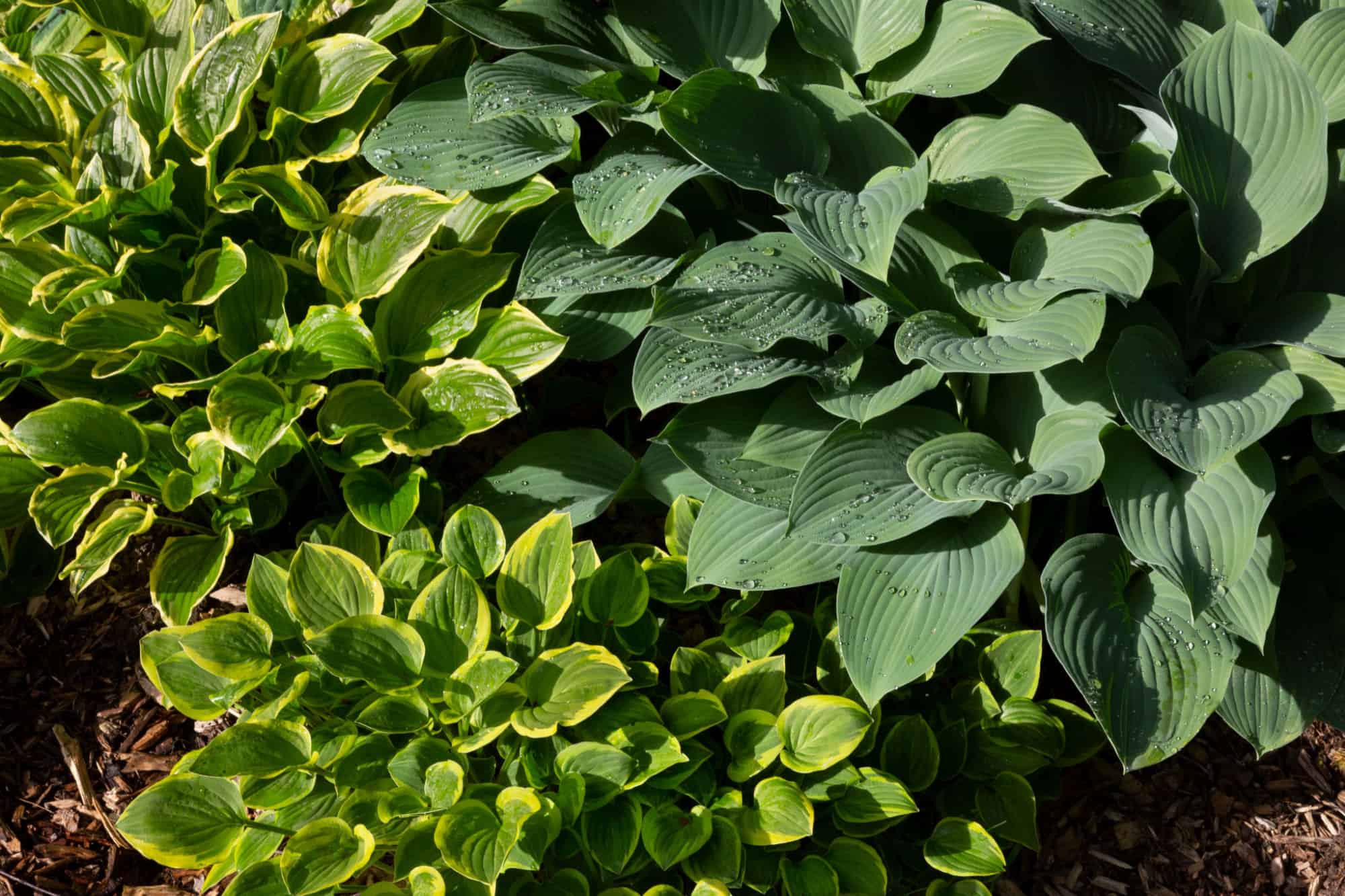Whether you are seeking an updated landscaping design or want to try your hand at growing hosta seeds, there are several ways to accomplish this. Known for their ease of care once established, hosta plants make attractive additions to any garden. But can you grow your own hosta plants from seed, or is it best to purchase established hosta plants from your local garden center?
You can easily grow your own hosta plants from seed, though hostas rarely produce seeds that match their parent plant. However, hostas germinate readily indoors in winter and spring, ready to be planted outdoors in early fall. You can also gather more hosta seeds when their flowers wilt and die. These seeds should be germinated for roughly one month in your fridge before sowing.
If you want to grow your own hosta plants from seed, read on to check out our step-by-step guide for how to accomplish this!
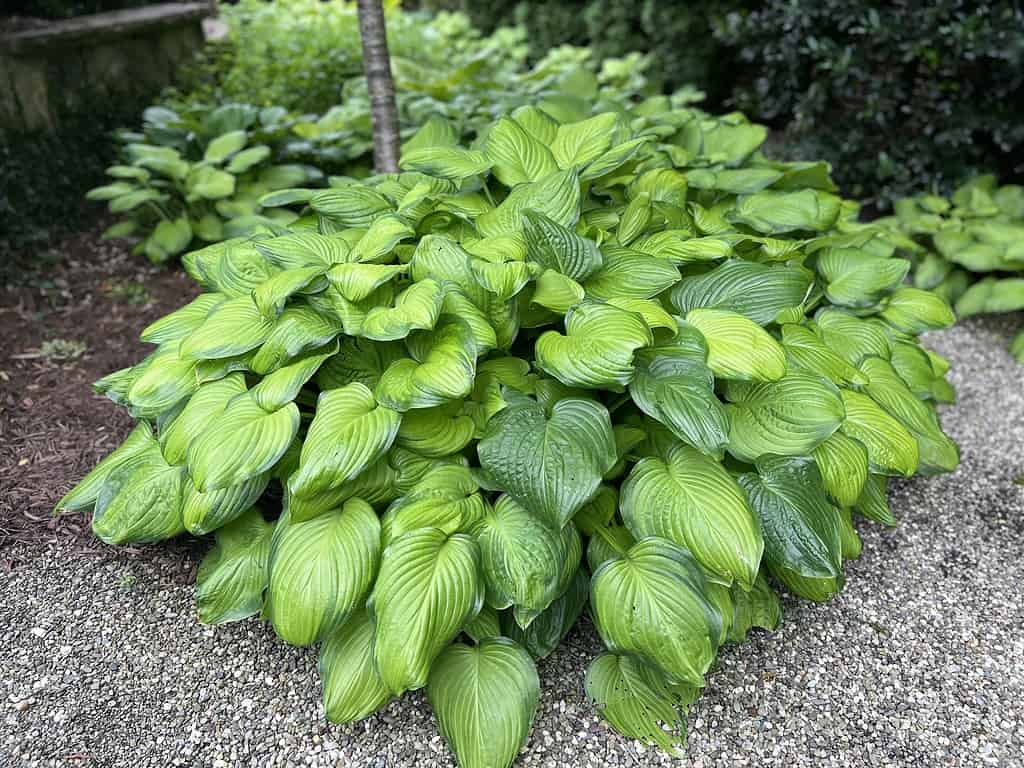
| Hosta Seeds | How to Grow |
|---|---|
| Hardiness Zones | 3 through 9 |
| Number of Hosta Varieties | Thousands of varieties, divided by size and color combinations |
| Time of Year to Germinate Seeds | One month before an indoor planting date (mid-winter or early spring) |
| Time of Year to Plant Seedlings | After a summer hardening period, likely early fall |
| Things to Note | Hosta seeds have low levels of germination, so be sure to plant an abundance of them for best results! |
Types and Varieties of Hosta Seeds

Reaching no more than 9 inches in height, miniature hostas are ideally grown in containers or compact locations in your backyard.
©VH-studio/Shutterstock.com
Given that hosta plants don’t grow true to seed, or accurate to their parent plant, there are countless varieties of hostas out there. Most growers or hosta plant experts separate hostas by size. If you are seeking a hosta variety for your backyard, here are some of the most popular cultivars, separated by size!
Miniature Hostas
Reaching no more than 9 inches in height, miniature hostas are ideally grown in containers or compact locations in your backyard. Some fantastic mini hosta varieties include the variegated “Little Wonder” hosta and the uniquely ruffled “Dragon Tails” hosta.
Small Hostas
Averaging just over one foot in size, small hostas never outgrow your rock garden or border area. If you want a classic deep green variety, check out the “Peter Pan” hosta, or go with the “Autumn Frost” hosta for a variety with light yellow and gray leaves.
Medium Hostas
Just under two feet tall, medium-sized hostas are best in landscaping features and large containers. The “Lakeside Dragonfly” hosta produces thinner green and yellow leaves compared to the average hosta, while “Blue Ivory” hostas add an elegant gray tinge to any shade garden.

Large Hostas
Anything under 30 inches but over 24 inches can be counted as a large hosta. If you have the space for an eye-catching large variety, the “Miss America” hosta has luxurious green and white foliage, while the “Glossy Ruffles” hosta produces ruffly, shiny leaves!
Giant Hostas
If you want to go big, giant hostas are considered to be over 30 inches tall. The “Blarney Stone” hosta produces leaves that are enormous and deep green, while the “Frost Giant” cultivar has iconic yellow edges.
Germinating and Growing Hosta Seeds
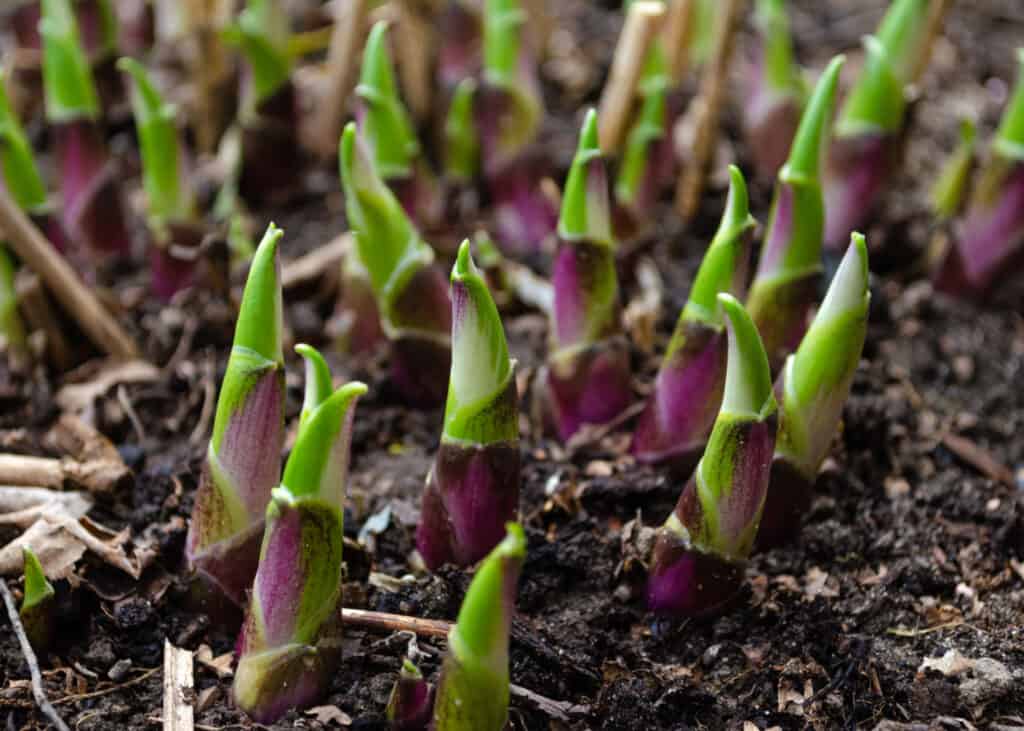
While hostas typically need less than 20 days to germinate, they will only do so under damp and warm conditions, anywhere from 60-75 degrees Fahrenheit.
©kmarina/Shutterstock.com
Growing hosta from seeds can be a fun and rewarding endeavor if you take a couple of extra steps. Most experts recommend storing your hosta seeds in a cold environment, such as a refrigerator, before planting or sowing them. Here’s our step-by-step guide for how to best plant your hosta seeds!
- Stratify your hosta seeds, if you have time. Some studies suggest that keeping your hosta seeds in the fridge for a month before you plant them helps with their germination rates. Many hosta seeds don’t ever end up producing plants, but cold-stratifying your seeds may help your odds immensely!
- Start your hosta seeds indoors. Plant your stratified seeds in individual pots or large soil flats. Make sure to use a soil blend that has potting mix as well as perlite, as hostas enjoy mixed soil. Given that many hosta seeds won’t ever germinate, plant multiple seeds per pot or section.
- Keep your seedlings moist and warm. While hostas typically need less than 20 days to germinate, they will only do so under damp and warm conditions, anywhere from 60-75 degrees Fahrenheit. Cover your seeds using plastic trays or other specialized seed germination products.
- Once leaves emerge, remove your plastic cover. Your hostas have germinated enough to be free from their protective humidity dome! However, make sure to keep your seedlings moist as they continue growing indoors.
- Thin your plants as needed. You should only have one to two plants per area, and you might’ve ended up with more viable seedlings than you expected!
Transplanting Hosta Plants Grown From Seed
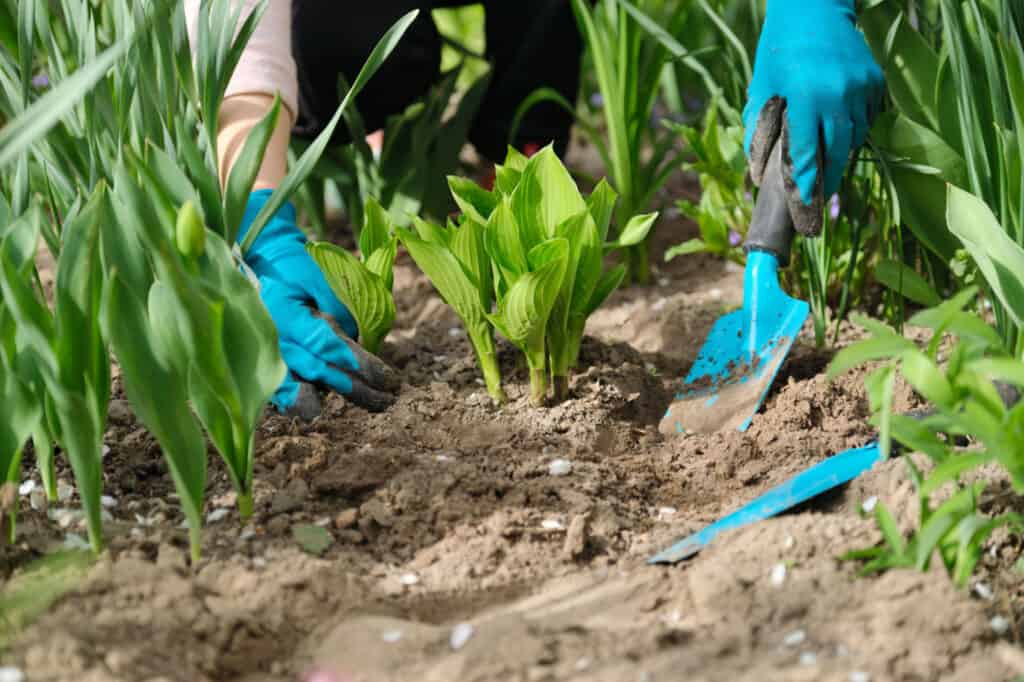
Your hostas will thrive in shade, as many varieties can’t handle the heat of full sunshine.
©VH-studio/Shutterstock.com
If your seeds took and you now have more hosta seedlings than you know what to do with, it’s time for transplanting! However, most gardeners have the best results with their hosta seedlings if they choose to harden off their young plants in containers outside, before planting them in the soil. Here’s a more detailed guide as to how to accomplish this:
- Bring your hosta starts outside in the summertime. Once your weather has warmed up, hostas should be brought outdoors to adapt to a more uncontrolled environment.
- Once summer has ended, prepare a shady planting location. Your hostas will thrive in shade, as many varieties can’t handle the heat of full sunshine. Work compost into the first few inches of soil for happy hostas!
- Space your young hosta plants up to 3 feet apart. You can always plant mini hostas closer to each other, but giant hostas need plenty of space to spread out as they grow. Make sure to plant accordingly.
Harvesting Hosta Seeds

Make sure your hosta seeds have a couple of days to dry out, but then you should be ready for stratification or planting!
©Adriana Iacob/Shutterstock.com
If you want to harvest hosta seeds from your own plants, it’s more than possible. However, keep in mind that hosta plants don’t produce seeds that are accurate to their parent plant, and some hosta varieties don’t produce seeds at all! If you notice your hosta plant producing flowers that transform into seed pods, similarly to sugar snap peas, you may be able to harvest some viable seeds.
All you need to do is gather these seed pods once they have turned brown on the plant. Gently open up the pods and save any seeds that are dark brown or black in color. They should have a papery coating that you leave intact for growing. Make sure your hosta seeds have a couple of days to dry out, but then you should be ready for stratification or planting!
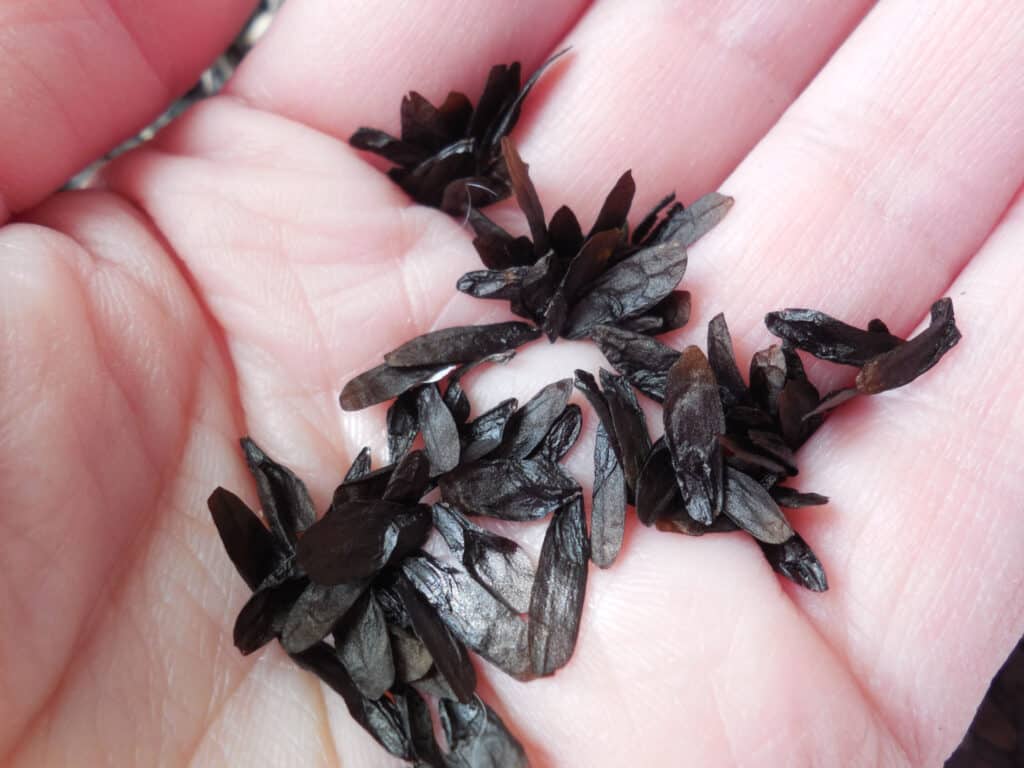
If you notice your hosta plant producing flowers that transform into seed pods, similarly to sugar snap peas, you may be able to harvest some viable seeds.
©Marina Bakusheva/Shutterstock.com
Up Next
Thank you for reading! Have some feedback for us? Contact the AZ Animals editorial team.

